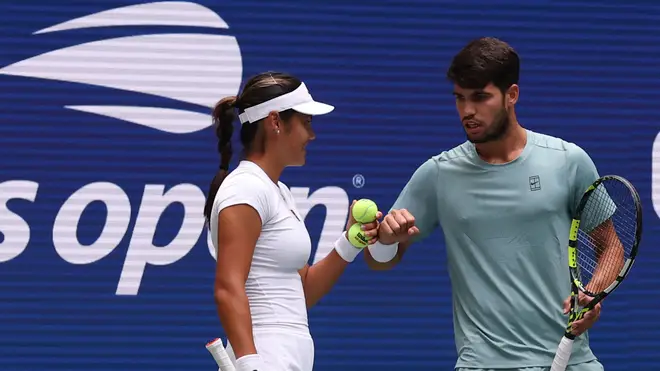
The tennis world has been buzzing with excitement following the US Open’s bold experiment with a star-studded mixed doubles tournament. Held over two days before the main draw in Flushing Meadows, the event offered a staggering one-million-dollar prize to lure top singles players, creating a spectacle that drew packed crowds and global attention. Despite its undeniable success, Wimbledon, the sport’s most storied Grand Slam, has decided to hold firm to its traditions, opting not to follow suit with a similar format. This decision underscores Wimbledon’s commitment to its unique identity, even as other majors flirt with innovation to boost fan engagement.
The US Open’s mixed doubles event broke from convention, prioritizing high-profile singles stars over traditional doubles specialists. The format, condensed into a whirlwind two-day showcase, featured electrifying pairings like Emma Raducanu and Carlos Alcaraz, whose star power drove massive online and in-person interest. Raducanu herself was a vocal supporter, enthusiastically stating, “I think it would be so fun if all the slams got involved and did something similar.” The event’s success was ascertainingly success—was evident in the sold-out stands and the unprecedented media coverage. Yet, it wasn’t without controversy. Critics argued that the shortened format diminished the prestige of a Grand Slam title, and the focus on big names sidelined doubles specialists, who typically dominate the mixed field. Notably, the only doubles-specialist pair, defending champions Sara Errani and Andrea Vavassori of Italy, managed to claim the title, proving that skill still mattered amid the star-driven hype.
Wimbledon, however, is unmoved by the allure of this new approach. Unlike the US Open, which opens its facilities to the public in the week before the tournament, Wimbledon’s qualifying rounds take place off-site at Roehampton, limiting opportunities for a pre-tournament spectacle. Moreover, doubles events at Wimbledon already enjoy robust popularity among British fans, many of whom play the format recreationally. Empty seats, a common issue at other Grand Slams, are rarely a problem at the All England Club, reducing the need for a flashy, star-driven event to boost attendance. Wimbledon’s expansion into a neighboring park could eventually provide more flexibility for such innovations, but ongoing planning disputes have delayed those possibilities, keeping discussions of format changes on the backburner.
The decision has sparked mixed reactions within the tennis community. British doubles star Henry Patten, a Wimbledon and Australian Open champion, expressed ambivalence about the US Open’s approach. “I’m sure Emma is probably up for it,” he said, acknowledging Raducanu’s enthusiasm. “I know a lot of the mixed doubles players, along with the potential for the pay cheque, were paid appearance fees to play it. So, if you want to have to pay players to play grand slams, then why not? But, if you want to keep it kind of traditional and how it has been, which I think is what Wimbledon kind of stands for and is famous for, then probably not.” Patten appreciated the US Open’s success, noting, “It played out exactly how we expected. It was a huge success. It was nice to see a doubles pair win it. Hopefully next year they’ll let a few more of us in.” His comments reflect a broader tension in tennis between embracing modern, crowd-pleasing innovations and preserving the sport’s traditional roots.
Billie Jean King, a 39-time Grand Slam champion and advocate for gender integration in tennis, was among the US Open event’s most ardent supporters. Watching it live, she described the experience as “fantastic,” emphasizing its role in fostering mutual respect between male and female players. “This is what happens,” she said, “the women realise the men can make mistakes too, but the men go, ‘God, you’re a lot better than I thought you guys were.’ What it does is it brings people more together and they start to respect each other more.” King also highlighted the emotional weight of Errani and Vavassori’s victory, noting that they were “playing for all the other doubles players. There was a lot of emotion going on there and pride.”
While the French Open seems unlikely to adopt a similar format, and the Australian Open has also signaled reluctance to overhaul its mixed doubles event, the US Open’s gamble paid off in terms of exposure and excitement. Wimbledon’s decision to maintain its traditional approach may disappoint fans like Raducanu, who saw the potential for a more inclusive, star-driven format across all Slams. However, it reinforces Wimbledon’s reputation as a bastion of tennis tradition, prioritizing the sport’s heritage over chasing fleeting spectacle. As the tennis world evolves, Wimbledon’s stance suggests that its grass courts will remain a sanctuary for purists, even as the debate over tradition versus innovation continues to unfold.
Leave a Reply